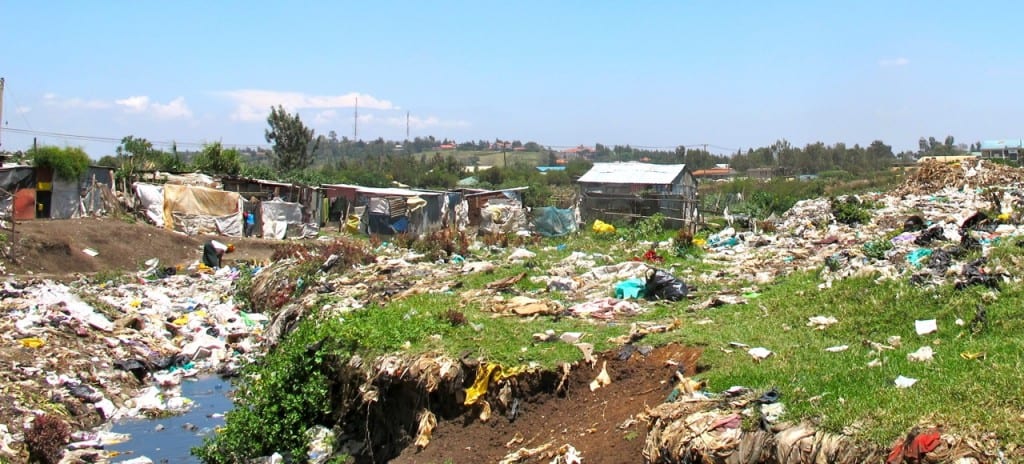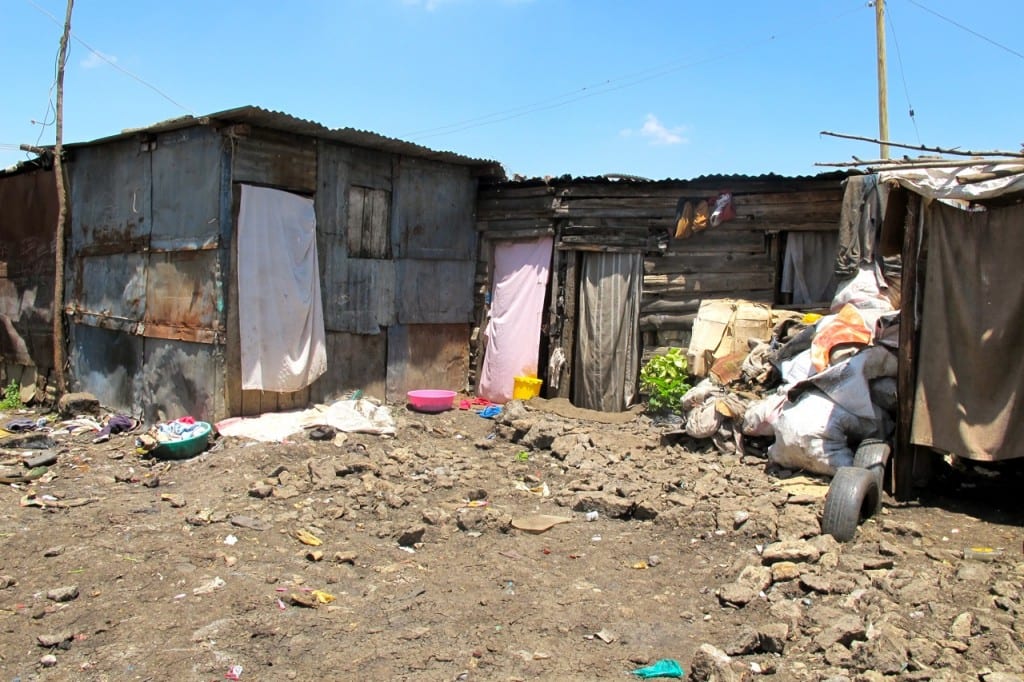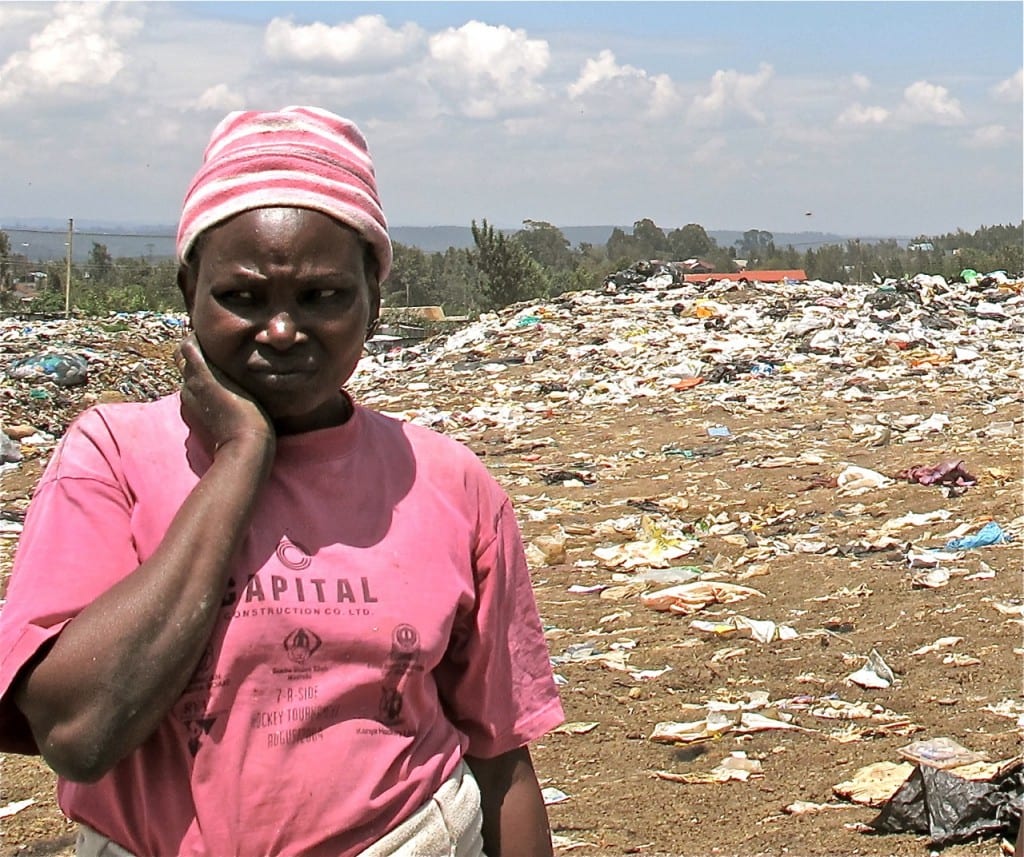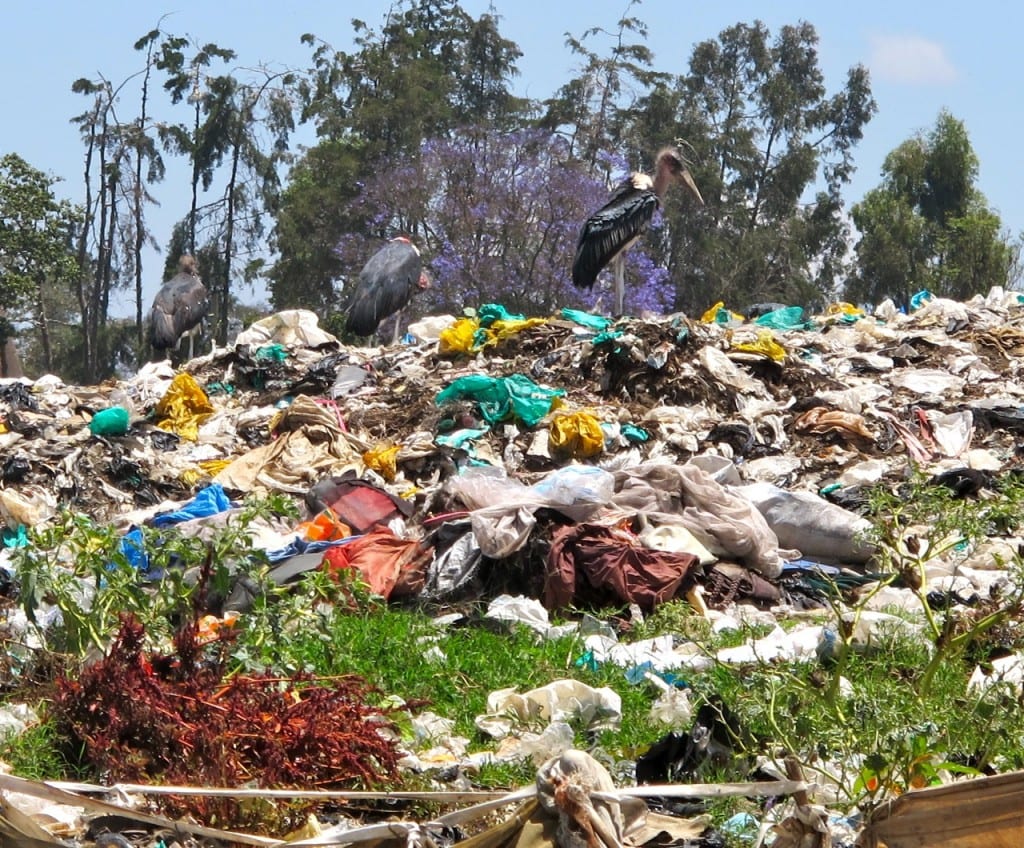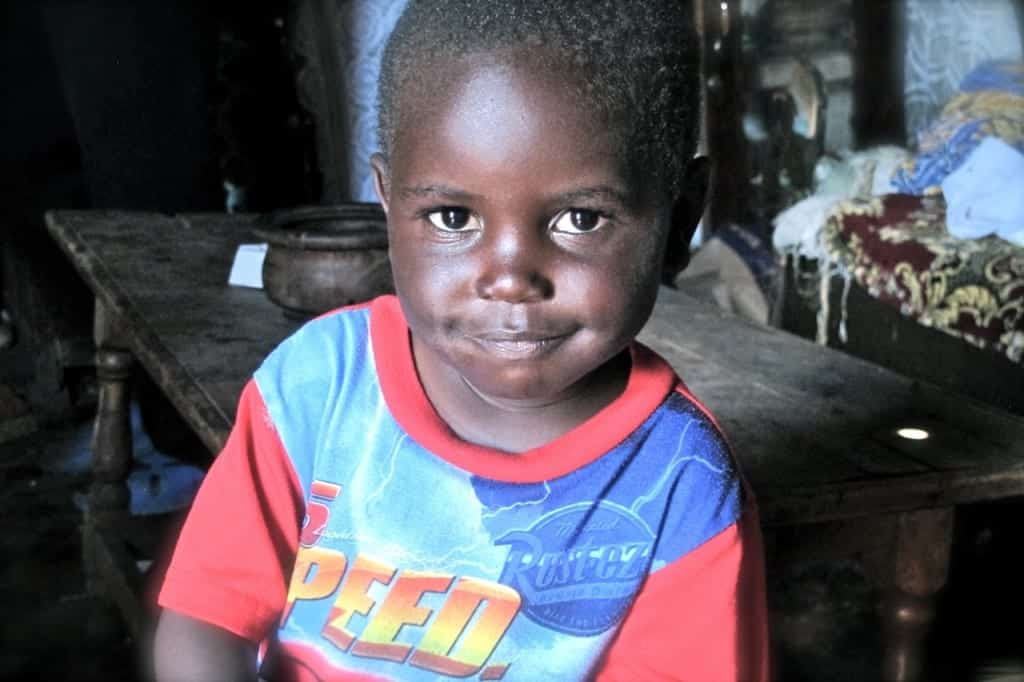Volunteering at the Compassion center in the Ngong Hills, Kenya, was as rewarding an experience as I’ve ever had in my life. I taught a class of shy 10-12-year-olds (who were very motivated by candy), helped catch the office up on behind-the-scenes admin, visited teachers at offsite schools to follow up on the status of several students and spent a couple of Saturdays acting silly and playing games with 200 precious Kenyan kiddos. I loved interacting with kids the most… partially because I turn into a 10-year-old when surrounded by 10-year-olds, but also because having fun can almost make you forget the insurmountable poverty around you.
Teaching kiddos in Kenya
I didn’t know when I was chatting with Sammy about volunteering that I’d be able to visit a nearby slum, where many of the sponsored kids live. I’ve visited some destitute, impoverished spots in Bolivia, but had never been to a slum. After having been to this one in the Ngong Hills area, I did some research and found that almost 1 billion people live in slums around the world.
Though I was entering with the pastor of the nearby church, I still had to meet in advance with the slum boss (like the mayor, but with no real legislative power) to be granted safe passage. After about a 20 minute walk from the Compassion center, I met the boss, he eyed me curiously and eventually nodded to indicate I was allowed in.
I’d be lying if I said I wasn’t nervous about what I’d see inside.
Slum residents gather bits of spoiled food to sell
As I mentioned, years ago I had the opportunity to work with street kids in Bolivia. This forgotten sliver of the population has been abandoned by their families. Many have been subjected to severe physical and sexual abuse, and to escape, they’ve flocked to the sewers around the city. To cope with the emotional wounds, hunger and hopelessness, kids as young as 8 can be found huddled together in the putrid, damp caverns beneath street level, often with their faces buried in plastic bottles of toxic glue. The fumes have a numbing affect on the brain. The kids don’t know another way to cope. I cried all night after my first trip to the sewer.
Poverty isn’t new to me, so why does it still feel like a fresh kick in the gut every time?
Ngong Hills Slum
This particular slum in the Ngong Hills is home to a few thousand people, but it’s by no means the largest in the area. That distinction belongs to the massive Kibera, which is closer to the city center and a great deal more frightening to visit from what I hear.
As in Kibera, homes for entire families are made of little more than scraps of metal and bits of fabric. They certainly aren’t protected from cold or heat. A stream of raw sewage runs through the development. Children wander the narrow, muddy corridors without shoes. Parents spend the day hunched over at the waist in the adjoining dump – yes, where everyone else leaves what they don’t want – searching for scraps fit to sell farmers for their pigs. They might make a dollar a day. There’s most definitely not enough food to go around. Given the origin of the word slum is the Irish phrase ‘S lom é meaning “a bleak or destitute place,” the only word to sum up the situation is hopeless.
There is no other way for these families. There is nothing more to aspire to. There is no pulling yourself up by your bootstraps. There is no “try harder.” There is no escape.
One of the homes I visited
There are no official statistics to report about survival from this dot on the globe, so I can’t say for sure how many people live in this Kenyan slum or what their income is (if they even have an income) or how many are affected by HIV or how many die from starvation or preventable disease. It feels like the government has said, “What’s the sense in counting kids who probably won’t live to see adulthood and who don’t have a hope of leaving this place for something better?” It’s almost like the people in the slums don’t exist.
Conducting a home visit for one of the Compassion kids
As I wandered around the slum with the pastor from the church up the hill, I struggled to keep my discomfort at bay. It’s not that I felt like I was in danger, though how could I blame anyone there if they’d taken the chance to steal from me or hurt me in some way? I’ve never had a truly hungry belly so I can’t say if the tables were turned that I wouldn’t want to snatch the $500 camera hanging around the neck of some girl who probably throws away more food in a day than I’d have the chance to eat in a month.
How do you react when invited into a home that wouldn’t qualify as a livestock shed in your own world? I tend to get very quiet, focusing on playing with the kids. Lots of smiles and warmth and quiet understanding. But that feels so inadequate.
How could I ever find the words to convey how unjust it is that I was born where I was born, not wealthy at all by US standards but rich as a king in the rest of the world?
The best I could do was hug the kids and pretend like my stomach wasn’t churning from the stench, squeeze the dirty hands of the mothers who have no other options and thank each family for allowing me to share their lives for just a day.
On the way from one dwelling to another, I met a little boy whose face was covered in a patched-up, bloody bandage. I found out he’d been hit by a reckless motorcycle driver. He basically lives in a fetid, germ-filled garbage dump. What chance does he have of healing successfully and without infection?
I met a mom who rescued an abandoned baby someone had left to die in the dump. She lives in the slum in a shack. A shack would be an upgrade, actually. But she took in the baby as her own even though it meant less food for her and less food for her own kids.
Where’s the escape route for children born in the slum?
Thought about taking this little cutie home with me
As I visited the various parents of the Compassion kids, asking about the welfare and development of their little ones, taking notes for each child’s file, I began to fill up with emotion. Rage that starvation and disease happens so openly when there’s plenty to go around. Sadness that so many people are just plain unaware of the daily struggle to survive in the Third World. And finally, resigned determination. Determination to do something to help these families.
But doubts crept in. This is a huge problem, obviously way bigger than this one slum in one country. I can’t solve world hunger. Even if the families had thousands of dollars, they wouldn’t know what to do with it. I had to find a way to help on their terms.
As I walked through the squalor, and smelled the rotting trash heap and open sewage, I plotted.
I don’t believe throwing money at poverty is the solution. You know what they say about giving a man a fish vs. teaching a man to fish. I want to teach the families of the slum to fish… in a sense. And I want to do it through a very fast, very inexpensive effort called Adopt-a-Slum.
If I’m traveling the world and not making a positive impact, I’m convinced I’m just a waste of space on this earth. So I’m putting my energy (and funds) where my mouth (blog) is and going for it. With a minimal (and I really mean MINIMAL!) financial investment, I believe we can change 30 families’ lives and put them on the road to a successful future.
Want to know how? Click here.



